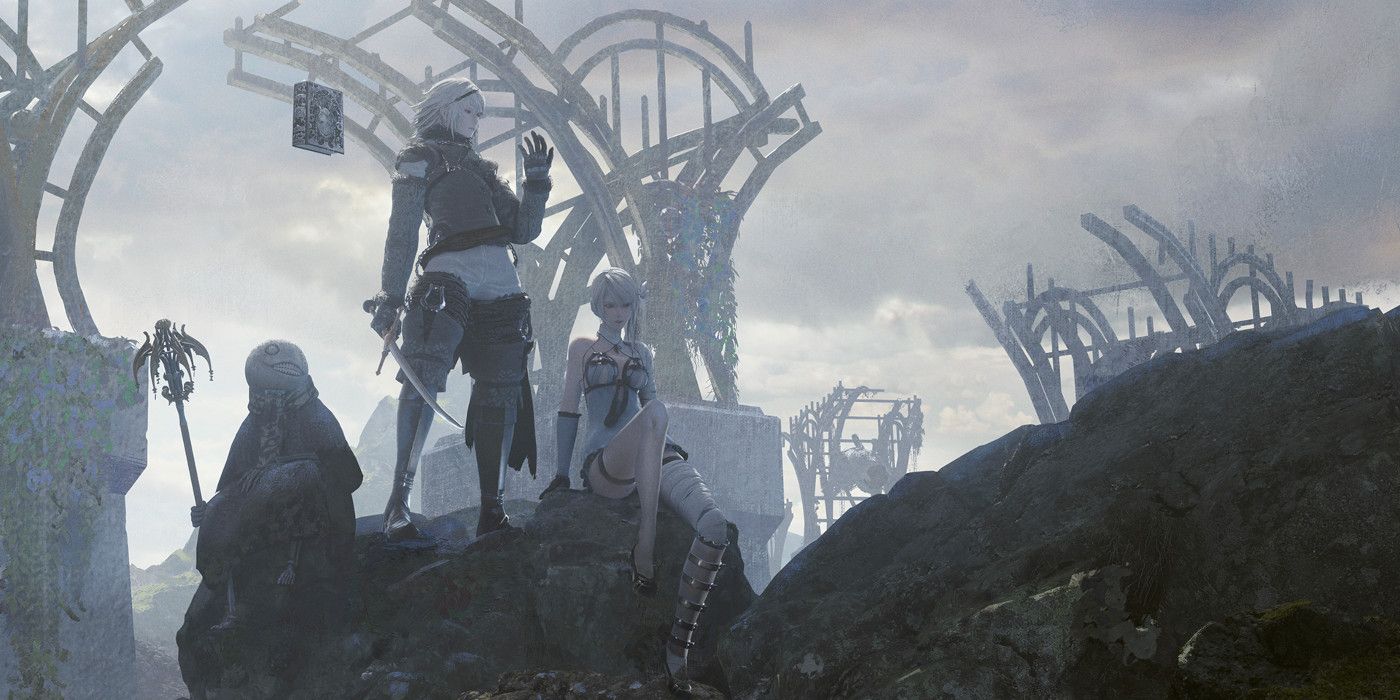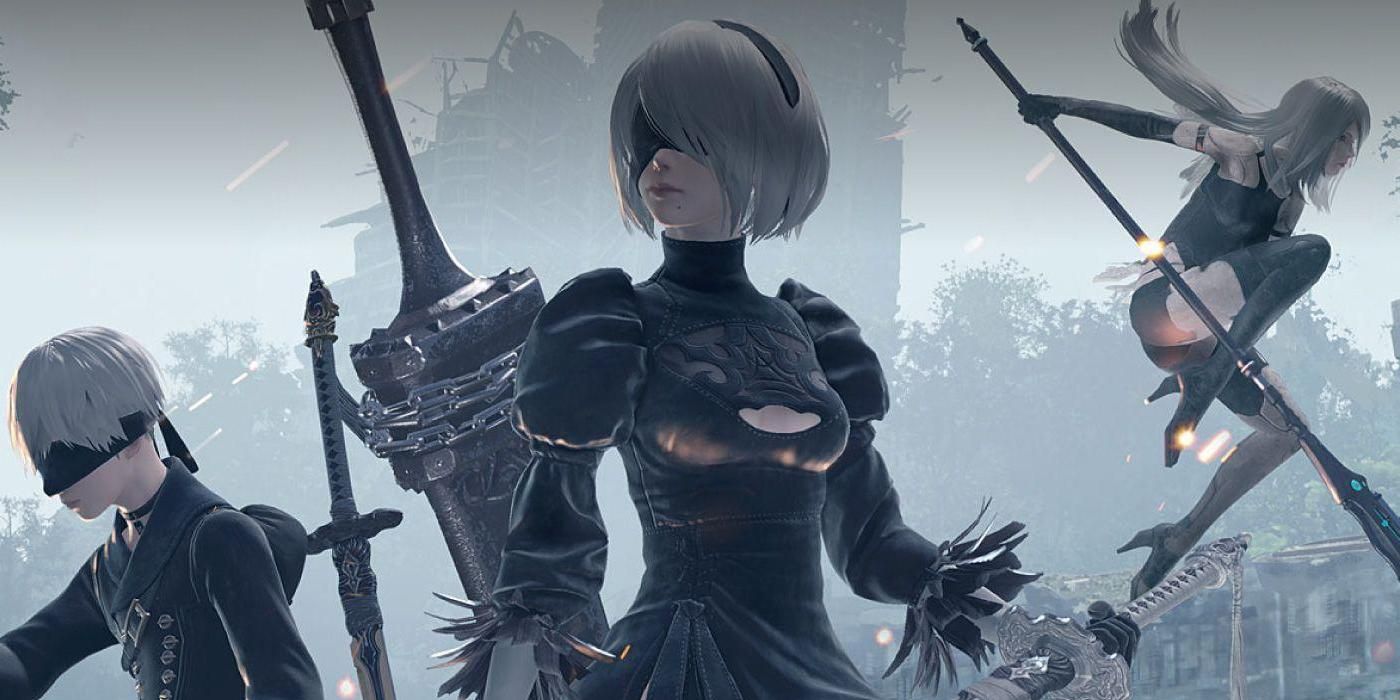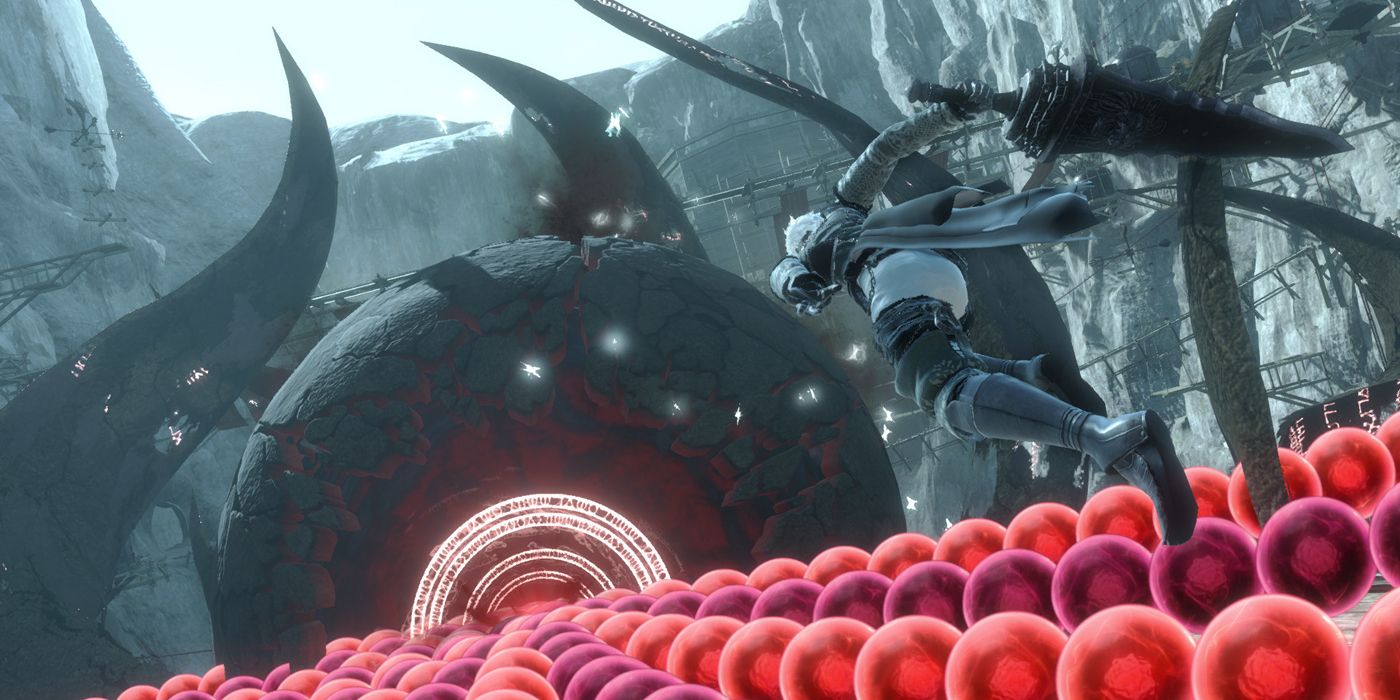With the recent release of NieR Replicant, fans are able to enjoy a remastered classic to its full potential on modern hardware. Featuring a masterfully crafted storyline with emotional twists, NieR Replicant is similar to NieR Automata in that it has a number of different endings. Players will have to replay the game a few times in order to see everything and the narrative will sometimes branch off in different directions.
While it might seem strange that the NieR games seem to have so many endings, it serves an important narrative purpose. The NieR series is unique in that endings don't necessarily imply minor dialogue differences or branching plot points. Instead, the concept of endings can be thought of as chapters where the continuation of the story relies on different perspectives or entirely new scenarios. Although it can be confusing for some players, the NieR series relies on multiple endings to slowly unveil story elements over time.
The Narrative Purpose With Multiple Endings
The concept of having so many endings in NieR games might seem foreign to many players but for series director Yoko Taro, it's the best approach to telling the complex stories. As stated in interviews, Yoko Taro prefers a unique writing style called backward scripting where a story's conclusion is written first before building the narrative and world backwards from that point. He also uses a method called photo-thinking where he imagines how a scene will look when an emotional peak occurs during the story and how it will be conveyed to players. Together, these methods form the backbone of the NieR games and are what enable them to stir emotional responses from the audience.
Multiple endings also enable Yoko Taro's style of storytelling better. In the NieR games, many of the plotlines are often foreshadowed by other events in the game but are shrouded behind a different perspective or scenario. It isn't until players finish all of the endings do they understand the narrative purpose of the endings by themselves.
When players think about games with multiple endings, they usually think about games which have branching plotlines or minor dialogue differences. More often than not, these endings are optional and don't serve a purpose in the overarching narrative aside from being nice bonuses or further insight into characters. However, the use of multiple endings in the NieR series is vital because the player won't have completed the story until they have seen all the endings.
The Journey to Find a Happy Ending
The idea of having multiple endings which all connect in an overarching narrative isn't exclusive to NieR games. In fact, it originally started with the Drakengard series where Yoko Taro created a number of different endings because he thought there wouldn't be a sequel. Each of Drakengard's endings become progressively more difficult to unlock while getting more surreal and bizarre. NieR is actually a spinoff from one of the Drakengard endings where the planet has been left in a state of decay.
The NieR series functions similarly to Drakengard in that players have to work for their happy endings. Yoko Taro's writing philosophy is centered around big emotional moments that require foreshadowing and events to build up. This means that players are connected to the characters in NieR over the course of a playthrough as they slowly learn their motivations and fears. In any Yoko Taro game, almost all of the endings will result in disastrous consequences or immense suffering. The hopeful or neutral endings are hidden behind multiple bad ones which ensure that players struggle alongside the characters, leading to greater emotional impact. Unlike other games with multiple endings, NieR games use them to transform the narrative instead of merely functioning as a second playthrough.
Using Multiple Endings in Nier
Since the idea of multiple endings changing the actual storyline is rare, NieR games often subvert players' expectations and this makes the final moment much more gripping. For example, in NieR Automata, there are five main endings that players must complete before experiencing the entire story. The first and second playthroughs have seemingly minor differences in that they follow 2B and 9S's perspectives during a mission. Though it might appear redundant at first, the different dialogues from both characters give players insight into their feelings and motivations. While the gameplay itself doesn't change much, it helps players become attached to the characters after following both perspectives.
By the time the third ending rolls around, players have naturally become fond of the characters and as a result, their suffering is much heavier on the players. As in any Yoko Taro game, players will have to work for their happy endings and NieR Automata is no different. The final ending requires much deliberation on the players' part and features a near impossible minigame to complete before revealing the true end. Only at the end of the final route do players understand the importance of the previous endings. The emotional impact of the final scenes only work because of the attachment to the characters that players have built up over the course of the game.
Subverting Player Expectations
In particular, Yoko Taro's usage of multiple endings is most effective on players who aren't familiar with his work. In NieR Automata, nothing is given away as the endings take players back to the title screen with few storyline changes within the first two chapters. Some players only completed the first route and were left in confusion as they didn't realize that they had only finished a small portion of the game. In fact, many reviewers who initially gave the game mediocre or negative scores confessed to only finishing the first or second routes.
While Yoko Taro's approach is risky given that players have different expectations of what multiple endings mean, it also serves to enhance his style of writing and hides the plotlines until he is ready to reveal them. Certainly, he could help players out by highlighting the importance of playing through all of the endings but that would minimize the emotional impact because players would no longer feel like they had worked for the final ending. The NieR series subverts player expectations specifically because they have no information about the different endings until they discover it for themselves.
NieR Replicant is available now on PC, PS4, and Xbox One.





